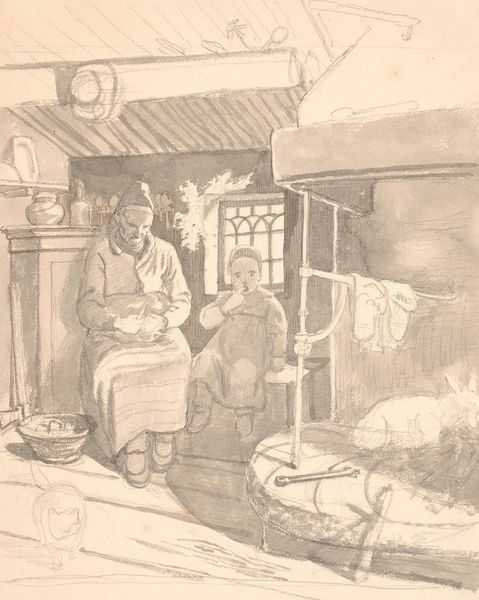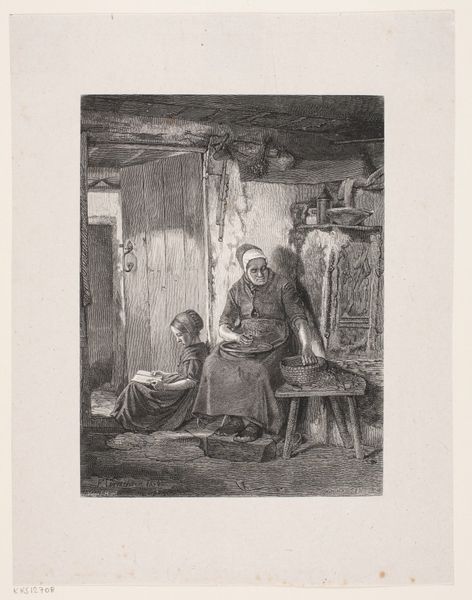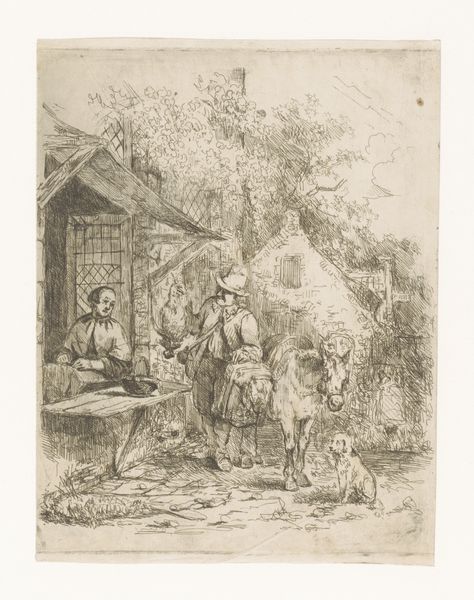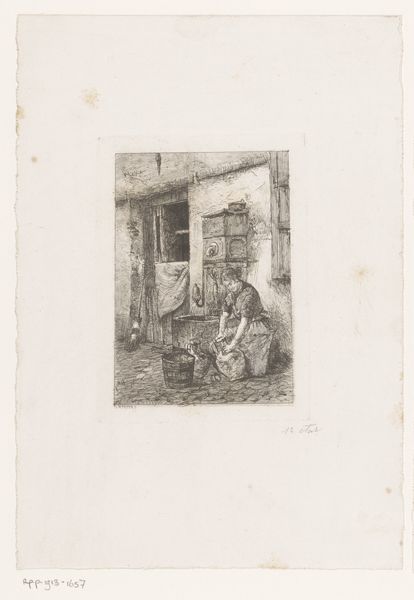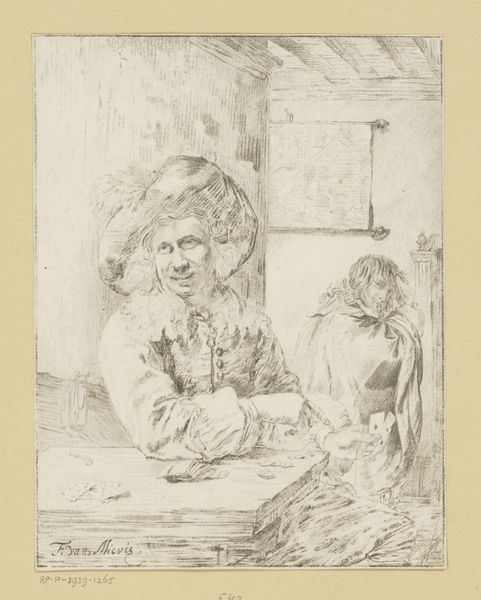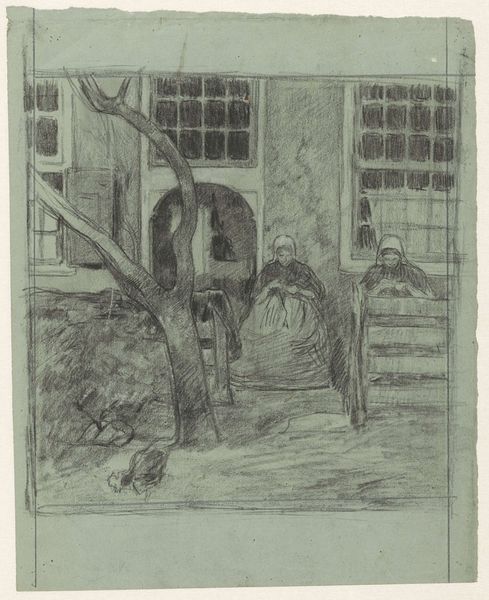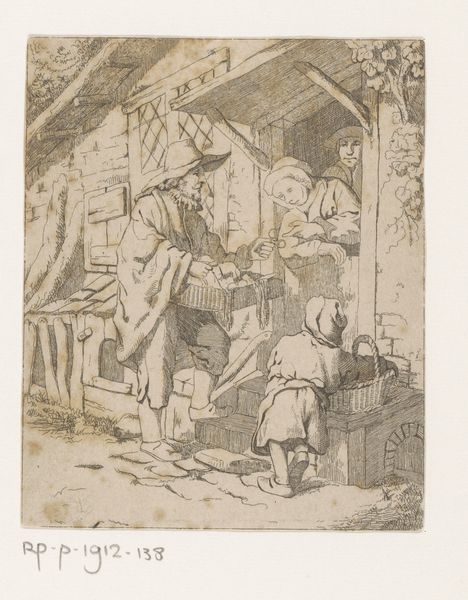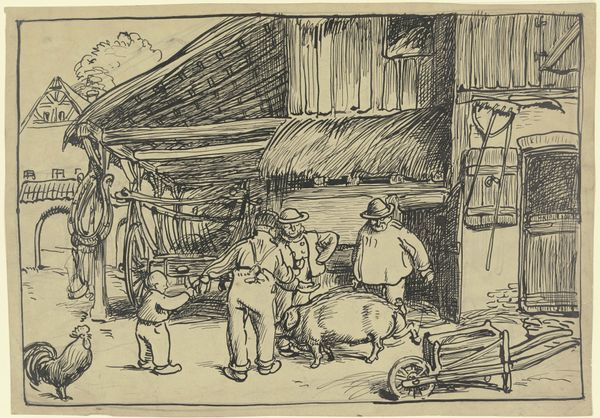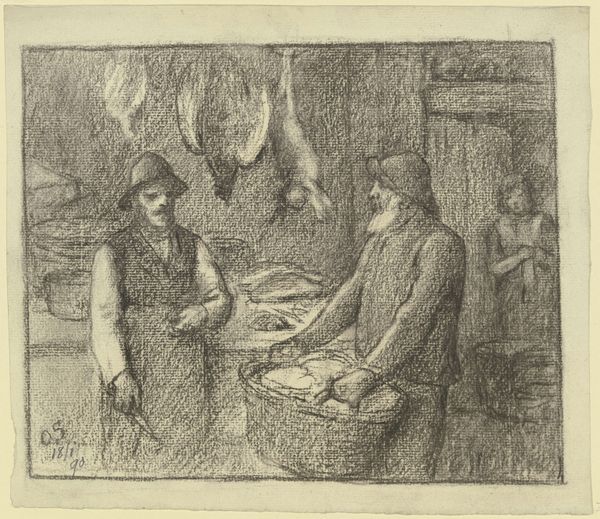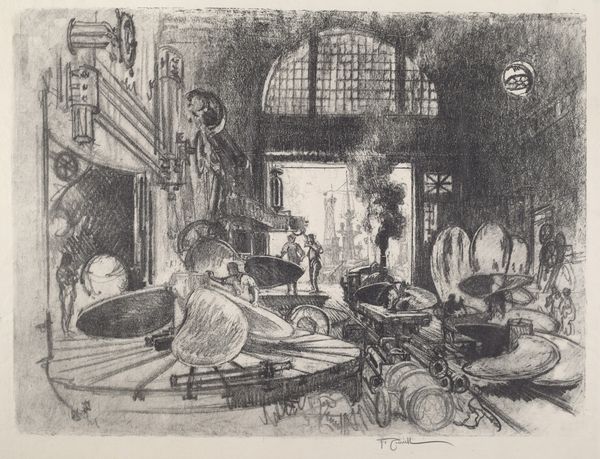
drawing, pencil
#
portrait
#
drawing
#
pencil
#
genre-painting
#
realism
Dimensions: 298 mm (height) x 235 mm (width) (bladmaal)
Editor: Here we have Wilhelm Marstrand's 1851 pencil drawing, "Svensk bondestue med gammel kone og barn," depicting an old woman and child in a Swedish peasant dwelling. The mood feels very intimate and quiet. What are your initial thoughts when looking at this piece? Curator: Well, it immediately strikes me as a window into 19th-century social dynamics. Marstrand, though Danish, seems interested in documenting Swedish rural life. Notice the "genre-painting" tag; this wasn’t about idealizing royalty or mythology, but about representing everyday existence, something that gained prominence with the rise of Realism. What does it tell us about who had the power to represent whom? Editor: That’s fascinating. I hadn’t considered the power dynamic. So, it's not just a neutral observation? Curator: Precisely. Think about the art market at the time. Who were the patrons? What was the purpose of depicting peasant life? Was it anthropological curiosity, social commentary, or something else entirely? The choice of subject matter and the very act of portrayal are political acts. Marstrand's "Realism" presents a specific view shaped by the art institutions and expectations of his time. Editor: I see. It prompts questions about authenticity and perspective. What is Marstrand, as a Danish artist, trying to convey by documenting this particular Swedish setting? Curator: Indeed. What aspects does he highlight? How does he frame the subjects? Also, consider the drawing itself as a commodity. Artworks like this often served to reinforce or challenge existing social hierarchies. Where would a work like this typically be displayed? And who would be viewing it? Editor: This perspective has completely changed how I see this drawing. I'm not just observing a scene but analyzing a complex interplay of social forces. Curator: Exactly! And by understanding that interplay, we gain a richer appreciation of both the art and the society that produced it. It moves us to thinking more critically about the intentions behind such images.
Comments
No comments
Be the first to comment and join the conversation on the ultimate creative platform.
